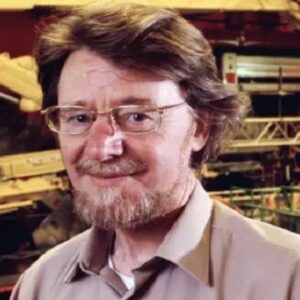People often say that there are two types of physicists: those who study nature like a book and those who write the book of nature. John Stewart Bell belonged to the first group, and his work showed that he was a conservative. Bell wanted to be a scientist from a very young age. He probably studied all of the different areas of Physics in college, and then he and his wife Mary Ross moved to the center of quantum physics, CERN, in Geneva. He was one of the best scientists ever because he was good at coming up with new ideas and because he knew a lot about both theoretical and practical physics. Bell was a bit of a traditionalist, so he never liked unusual or speculative ideas. After years of hard work, he came up with the famous “Bell’s theorem,” which put Einstein’s and other famous physicists’ ideas to the test. He was also known for his work in the fields of superdeterminism, chiral anomaly, and quantum entanglement. Bell is known for being a leader in the field of quantum physics and for making a unique contribution to science.
Early years and childhood
John Stewart Bell was born in Belfast, Northern Ireland, on June 28, 1928. His parents were John and Annie Bell. Both of his parents came from families with low incomes.
Even though no one in his family was interested in school, his parents chose to send him to school. His brothers taught themselves. After getting a scholarship, he finished high school in 1944 at Belfast Technical High School.
Bell went to the Queen’s University of Belfast and got his bachelor’s degree in experimental physics in 1948. He got another degree in mathematical physics from the same school the following year.
In 1956, he got his Ph.D. from the University of Birmingham, where he had done his doctoral work. Nuclear physics and quantum field theory where his areas of expertise.
John Bell’s Career
Bell came from a poor family, so he joined the Scientific Civil Service even before he got his Ph.D. Paul Peter Ewald, a famous crystallographer who used to be Bell’s teacher, told him to apply to the Atomic Energy Research Establishment at Harwell.
His next job was with a group at Malvern that designed accelerators. There, his theoretical and practical problem-solving skills in accelerator design were well known. This is also where he met Mary Ross, who would become his wife. In the field of Physics, they were a great team.
Bell took a leave of absence for a year and worked at the University of Birmingham from 1953 to 1954 in the Department of Mathematical Physics. His work here was also part of his Ph.D. thesis, and he focused his research on quantum field theory and nuclear physics.
In 1960, Bell and his wife quit their jobs with tenure and moved to CERN in Geneva, where they got jobs without tenure. They stayed there until their careers were over.
After taking a year off from CERN, Bell spent a year at Stanford University, the University of Wisconsin–Madison, and Brandeis University. After that, in 1964, he wrote a very well-known paper called “On the Einstein-Podolsky-Rosen Paradox.”
In this work, he kept going with the EPR analysis and showed how the famous Bell’s theorem was made. Many people didn’t agree with his theory, which led to a lot of debates.
In 1987, he was chosen as a Foreign Honorary Member of the American Academy of Arts and Sciences.
Works of note
One of Bell’s most important papers was called “On the Einstein-Podolsky-Rosen Paradox.” The most extreme ideas in the field of quantum theory were brought out by the paper that talked about Einstein and others’ experiments. The well-known “Bell’s Theorem” was also based on this paper.
Awards & Achievements
When he was elected to the Royal Society in 1972, Bell was given a lot of honor and attention right away.
In the 1980s, he worked on some important physics theories and won the Reality Foundation Prize (with John Clauser), the Dirac Medal, the Dannie Heineman Prize for Mathematical Physics, and the Hughes Medal of the Royal Society, among other awards.
Personal History and Legacies
In 1954, Bell married Mary Ross, who was also a physicist. While working on accelerator physics in the UK, they met.
Bell died of a brain bleed on October 1, 1990, when he was 62 years old.
In 2008, the Centre for Quantum Information and Quantum Control at the University of Toronto made the John Stewart Bell Prize in his honor. This prize is given to people who have made important contributions to the foundations of quantum mechanics and to how these principles are used.
Estimated Net worth
Unknown.
Trivia
This famous physicist decided to become a scientist when he was 11 years old. His family often called him “The Prof.”


